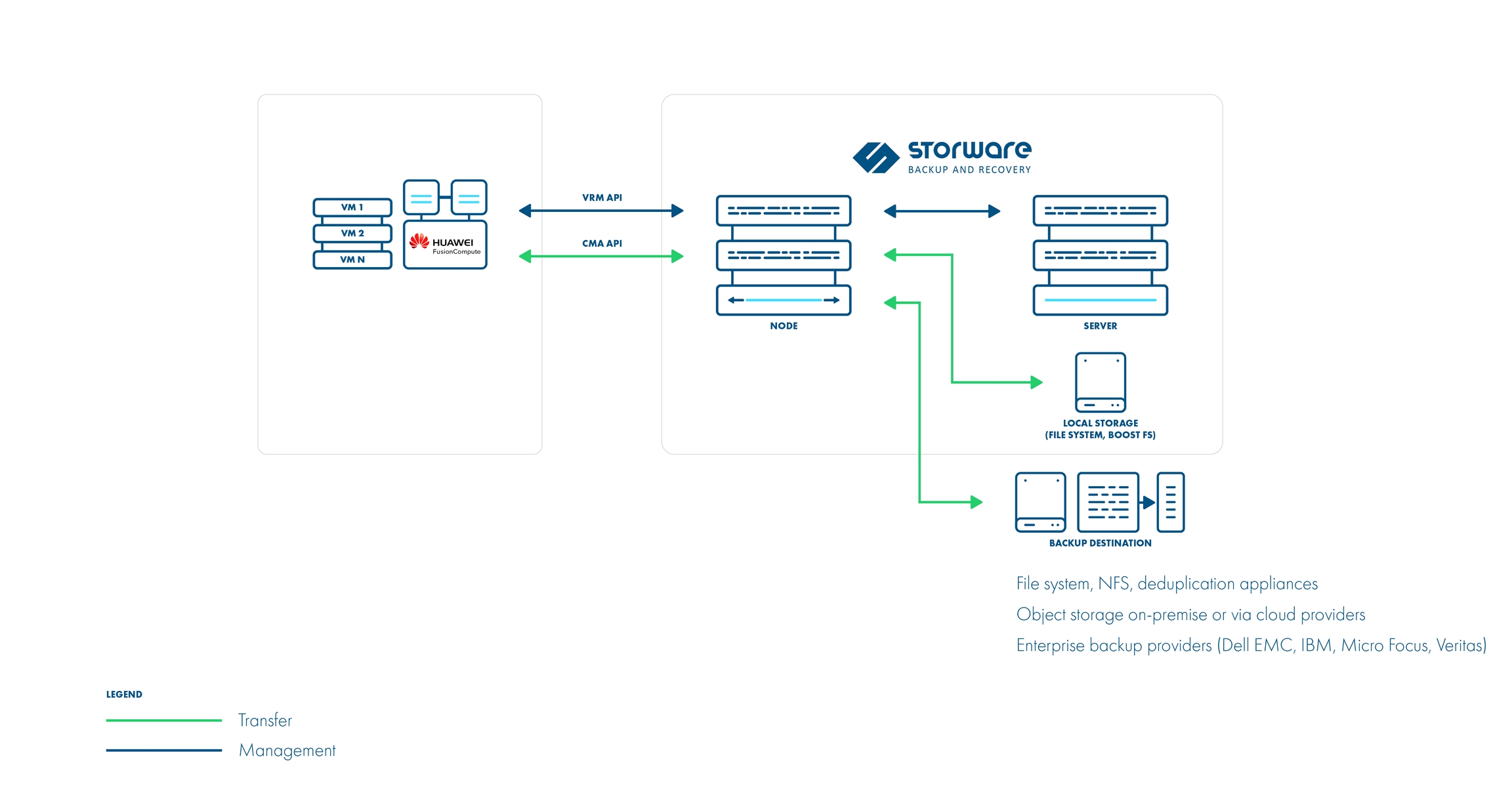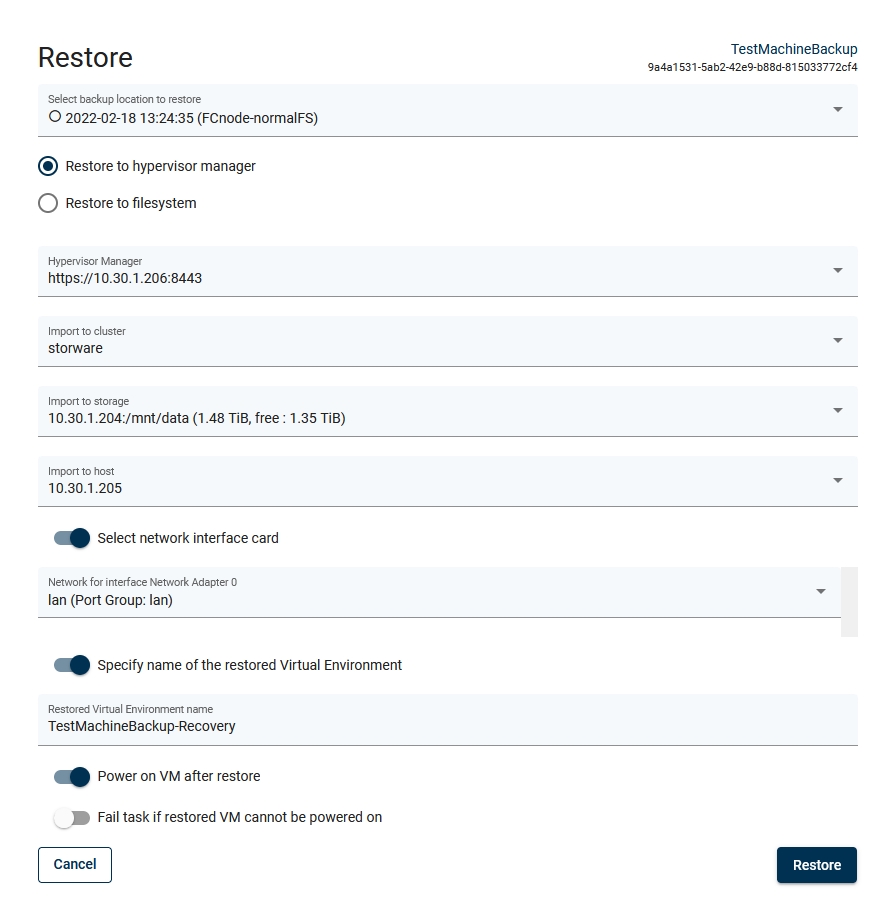Huawei FusionCompute
Supported version: 8.x.
The node can be installed outside of the environment, but not behind a NAT.
Incremental backup uses the CBT functionality of VRM. This means that currently, incremental backup can only be performed on VMs with installed VMTools (You can find instructions on how to install VMTools on VRM's Help page).

Creating a FusionCompute HypervisorManager
Fill in the URL field:
https
address of VRM server, hostname, or IP, with port (default is 8443)
Fill in the admin username and password for VRM.

Backup and Restore
Backup and restore use LANSSL transfer mode for communication with CNAs.
Requires a connection to each Hypervisor (data transfer during the backup/restore process will be performed directly between the node and the CNA/Hypervisor on which the VM is running).
Backup process
A snapshot of the VM is performed. (type 'normal' when the VM is without VMTools or type 'CBTbackup' if the VM has VMTools installed).
The metadata of VM is backed up in json format.
Each disk is then backed up sequentially, using LANSSL transfer mode. During this process, the node communicates with the specific CNA directly.
If the incremental backup is performed: additionally the CBT map for each disk is backed up.
The last snapshot is kept on the hvm for incremental backup.
Restore process
The node sends a request to the VRM to create a new VM based on the metadata stored during the backup process. The VRM automatically creates the required disks.
For each disk, the node sends data using LANSSL transfer mode directly to the CNA, restoring the backup content.
Restore settings
*Restore to hypervisor manager
Select the storage to which disks will be restored
Cluster and host selection:
If the host is selected then the VM will be restored to that host and bound to it.
If the host is set to None, then a cluster must be selected and the VM will be restored to that cluster
You can specify the name for the restored VM.
